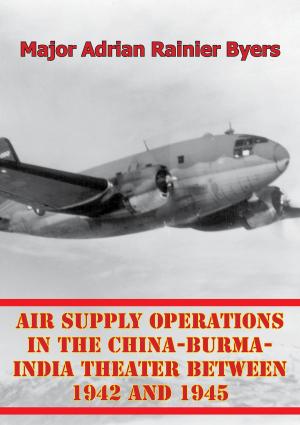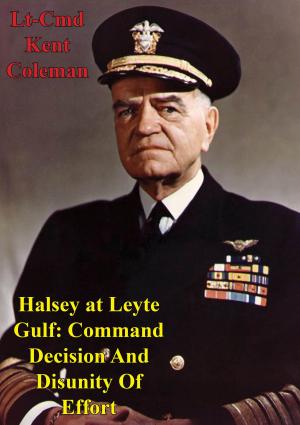| Author: | Major Willard B. Atkins II | ISBN: | 9781782893875 |
| Publisher: | Verdun Press | Publication: | August 15, 2014 |
| Imprint: | Verdun Press | Language: | English |
| Author: | Major Willard B. Atkins II |
| ISBN: | 9781782893875 |
| Publisher: | Verdun Press |
| Publication: | August 15, 2014 |
| Imprint: | Verdun Press |
| Language: | English |
The Battle of Stalingrad was a disaster. The German Sixth Army consisted of over 300,000 men when it approached Stalingrad in August 1942. On 2 February 1943, 91,000 remained; only some 5,000 survived Soviet captivity. Largely due to the success of previous aerial resupply operations, Luftwaffe leaders assured Hitler they could successfully supply the Sixth Army after it was trapped. However, the Luftwaffe was not up to the challenge. The primary reason was the weather, but organizational and structural flaws, as well as enemy actions, also contributed to their failure.
This thesis will address why the Demyansk and Kholm airlifts convinced the Germans that airlift was a panacea for encircled forces; the lessons learned from these airlifts and how they were applied at Stalingrad; why Hitler ordered the Stalingrad airlift despite the logistical impossibility; and seek out lessons for today’s military. The primary reason for the Stalingrad tragedy was that Germany’s strategic leadership did not apply lessons learned from earlier airlifts to the Stalingrad airlift, and the U.S. military is making similar mistakes with respect to the way it is handling its lessons learned from recent military operations.
The Battle of Stalingrad was a disaster. The German Sixth Army consisted of over 300,000 men when it approached Stalingrad in August 1942. On 2 February 1943, 91,000 remained; only some 5,000 survived Soviet captivity. Largely due to the success of previous aerial resupply operations, Luftwaffe leaders assured Hitler they could successfully supply the Sixth Army after it was trapped. However, the Luftwaffe was not up to the challenge. The primary reason was the weather, but organizational and structural flaws, as well as enemy actions, also contributed to their failure.
This thesis will address why the Demyansk and Kholm airlifts convinced the Germans that airlift was a panacea for encircled forces; the lessons learned from these airlifts and how they were applied at Stalingrad; why Hitler ordered the Stalingrad airlift despite the logistical impossibility; and seek out lessons for today’s military. The primary reason for the Stalingrad tragedy was that Germany’s strategic leadership did not apply lessons learned from earlier airlifts to the Stalingrad airlift, and the U.S. military is making similar mistakes with respect to the way it is handling its lessons learned from recent military operations.






![Cover of the book The History Of The Canterbury Mounted Rifles 1914-1919 [Illustrated Edition] by Major Willard B. Atkins II](https://www.kuoky.com/images/2014/june/300x300/9781782892465-b3yA_300x.jpg)

![Cover of the book Unconditional Surrender, Demobilization and the Atomic Bomb [Illustrated Edition] by Major Willard B. Atkins II](https://www.kuoky.com/images/2016/july/300x300/9781786259431-ZuRR_300x.jpg)






![Cover of the book Marines In World War II - Marines In The Central Solomons [Illustrated Edition] by Major Willard B. Atkins II](https://www.kuoky.com/images/2014/august/300x300/9781782892793-Vgqt_300x.jpg)